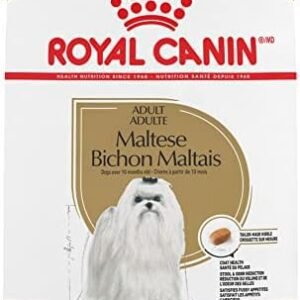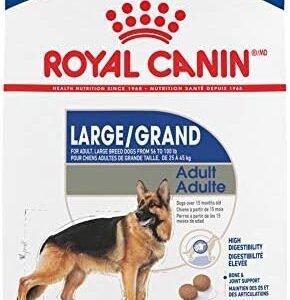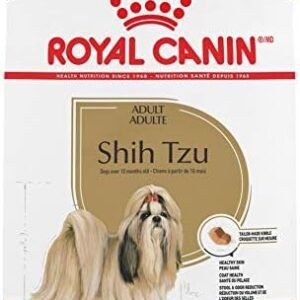In a clinical trial, 10% of dogs found complete relief from itching due to allergies with Clemastine Fumarate. This highlights the need for effective treatments for our furry companions. For pet owners, understanding how this antihistamine works is crucial for alleviating your dog’s allergy symptoms.
Clemastine Fumarate is a widely used medication for dogs with allergic reactions. This guide explores its usage, dosage, benefits, potential side effects, and how it stacks up against other antihistamines. With this information, you can make informed decisions about your dog’s allergy care.
Key Takeaways
- Clemastine Fumarate offers effective relief for allergic pruritus in dogs.
- Dosage varies by weight, ensuring tailored treatment for your dog.
- Common side effects include sedation and dry mouth; monitor for adverse reactions.
- Consult your veterinarian for interaction warnings with other medications.
- Available in both tablet and syrup formulations, requiring a veterinary prescription.
Table of Contents
Introduction to Clemastine Fumarate
Clemastine fumarate is a well-known antihistamine, primarily acting as an H1 receptor antagonist. It targets allergy symptoms, offering relief from itching and inflammation in dogs and cats. Pet owners frequently turn to it for treating various allergic reactions, providing both immediate relief and long-term allergy management.
This pet allergy treatment is notable for its availability in both over-the-counter and prescription forms. This flexibility makes it accessible and applicable for pet owners dealing with their animals’ allergy issues. The versatility of clemastine fumarate allows it to be part of a tailored treatment plan, addressing the unique needs of each pet.
Understanding clemastine fumarate’s role helps pet owners make informed decisions about their pets’ allergies. This knowledge significantly improves their pets’ quality of life.
Understanding Allergies in Dogs
Dog allergies are a common challenge for many pet owners. It’s crucial to grasp the symptoms and causes of allergies in dogs for effective treatment. Various environmental and dietary factors can trigger allergic reactions, causing discomfort and health issues.
Common Allergy Symptoms in Dogs
Dogs with allergies exhibit a range of dog allergy symptoms. These include:
- Excessive itching (pruritus)
- Sneezing and coughing
- Watery eyes and nasal discharge
- Skin inflammation and redness
- Frequent ear infections
Early recognition of these symptoms can significantly reduce their impact on your dog’s life.
Causes of Allergic Reactions
The causes of allergies in dogs vary widely, often linked to environmental factors. Common triggers are:
- Pollen, dust mites, and mold
- Specific food ingredients
- Flea bites and other insect irritants
Allergies occur when a dog’s immune system incorrectly perceives these substances as threats. This triggers an inflammatory response, leading to discomfort and health problems if not managed correctly.
Clemastine Fumarate for Dogs: Overview
Clemastine Fumarate is vital for managing allergic reactions in dogs. It works as an antihistamine, blocking H1 histamine receptors to reduce allergy symptoms. This medication effectively relieves itching, improving the life quality of pets with allergies.
Each tablet contains 2.68 mg of the active ingredient. It comes in bottles of 100 tablets, priced at $0.71 each. Autoship offers a 5% discount, and free shipping is available for orders of 84 tablets or more.
Clemastine Fumarate not only helps dogs but also cats with allergies. It should be given every 12 hours to effectively manage allergens like pollen. However, it may cause side effects such as diarrhea, excessive thirst, and drowsiness.
Customer reviews consistently give it a 5-star rating, highlighting its effectiveness. One reviewer noted its success in treating dog allergies with a specific diet. It’s crucial for pet owners to understand how to use and dose Clemastine correctly. Consulting with veterinarians is essential for personalized advice.
How Clemastine Fumarate Works
Clemastine fumarate is a potent antihistamine, crucial for treating allergy symptoms in pets. It works by blocking histamine at H1 receptor sites in tissues. Histamine, a key allergen response mediator, causes irritation, itching, and inflammation.
This medication prevents histamine’s effects, thus reducing discomfort. It is particularly beneficial for conditions like atopic dermatitis. Studies show it helps around 30% of itchy dogs and 50% of itchy cats. This makes it a favored choice for pet owners aiming to enhance their pets’ well-being.
However, recent research has pointed out the poor absorption of clemastine in dogs. This could impact its effectiveness for some pets. Yet, its twice-daily dosage is more convenient than many other antihistamines, promoting better compliance and consistent results.
Additionally, clemastine fumarate can work well with omega-3 fatty acid supplements, enhancing treatment for allergic skin conditions. Long-term use may also benefit pets with mast cell tumors, which can mimic allergy symptoms due to histamine granules.
In conclusion, clemastine fumarate’s mechanism of action makes it a key treatment for dogs with allergic reactions. By blocking histamine, it alleviates a variety of symptoms, ensuring pets live more comfortably and healthily.
Benefits of Clemastine Fumarate for Dogs
Clemastine fumarate is a valuable treatment for dogs with allergies. It helps manage symptoms caused by food, environmental, and seasonal allergies. Dogs show relief from rashes, watery eyes, and sneezing, leading to improved health.
Effective Allergy Relief
Clemastine fumarate is renowned for its allergy relief in dogs. It eases itching, runny nose, and watery eyes by blocking histamines. This results in a noticeable decrease in discomfort, enhancing the dogs’ and owners’ quality of life.
Comparative Efficacy with Other Antihistamines
Compared to diphenhydramine and hydroxyzine, clemastine fumarate is more effective and has fewer side effects. Veterinarians often prefer it for its reliability and effectiveness in treating allergies. This makes it a top choice for dog owners seeking a trustworthy medication for their pets.
Administering Clemastine Fumarate: Dosage Guidelines
Proper administration of clemastine fumarate is crucial for its effectiveness and safety in dogs. It’s essential to consider the dog’s weight and health when determining the correct dosage. This approach ensures the medication works well and reduces the chance of adverse effects.
General Dosage Recommendations
The standard dosage for dogs ranges from 0.05-0.1mg/kg every 12 hours. Tailoring the dosage to the dog’s weight helps achieve the right treatment level while avoiding excessive side effects.
Frequency and Method of Administration
Clemastine fumarate can be given orally, in both tablet and liquid forms. Following the vet’s instructions on dosage frequency is key to its effectiveness and safety. Typically, administering the medication every 12 hours helps maintain therapeutic blood levels.
Missed Doses: What to Do
If a dose is missed, administer it as soon as you remember, unless the next dose is due. In such cases, it’s best to skip the missed dose to avoid overdosing.
| Dog Weight (kg) | Dosage (mg) | Dosage Range (mg) |
|---|---|---|
| 5 | 0.25 – 0.5 | 0.25 – 0.5 |
| 10 | 0.5 – 1.0 | 0.5 – 1.0 |
| 15 | 0.75 – 1.5 | 0.75 – 1.5 |
| 20 | 1.0 – 2.0 | 1.0 – 2.0 |
| 25 | 1.25 – 2.5 | 1.25 – 2.5 |
Clemastine Fumarate Dosage for Dogs
Clemastine fumarate is a crucial antihistamine for dogs with allergies. It’s essential to know the right dosage for effective treatment. The dosage depends on the dog’s weight, as shown in the clemastine fumarate dosage chart. Follow these guidelines for the best results:
| Dog Weight | Dosage |
|---|---|
| Less than 22 lbs | 0.67 mg (half of 1.34 mg tablet) every 12 hours |
| 22-55 lbs | 1.34 mg (one tablet) every 12 hours |
| Over 55 lbs | 2.01 mg (1.5 tablets) every 12 hours |
Choosing the right dosage from the clemastine fumarate dosage chart effectively reduces allergy symptoms. It also minimizes side effects. Always talk to a vet to adjust the dosage for your dog’s unique needs. This ensures safe and effective treatment.
Potential Side Effects and Precautions
Clemastine fumarate is a medication used to treat allergies in dogs but comes with risks. It’s vital to understand the potential side effects and precautions for safe use. Dog owners must closely monitor their pets for adverse reactions when giving this medication.
Common Side Effects of Clemastine
Among the clemastine fumarate side effects in dogs, the most common include:
- Drowsiness
- Dizziness
- Dry mouth/nose/throat
- Constipation
- Stomach upset
- Blurred vision
- Clumsiness or trouble walking
Some serious side effects may also occur, such as:
- Mental or mood changes
- Trouble urinating
- Fast or irregular heartbeat
- Seizures
- Ringing in the ears
- Easy bruising or bleeding
Older dogs may be more sensitive to these side effects, especially drowsiness and confusion. Young dogs might show excitement instead of sedation. It’s crucial to monitor their reactions closely.
Specific Precautions for Pregnant or Lactating Dogs
When considering precautions for clemastine use in pregnant or nursing dogs, caution is key. Although Clemastine is generally safe, it could affect nursing puppies. Always consult with a veterinarian before using this medication on expectant or lactating dogs.
Adverse Reactions to Monitor
Owners should watch for serious adverse reactions. Symptoms like excessive sedation, rapid heartbeat, or urinary retention require immediate veterinary attention. Quick action can greatly impact your pet’s health and safety.
If you suspect an overdose or alarming side effects, contact a veterinarian immediately. In the U.S., report side effects to the FDA. Canadian pet owners should contact Health Canada.
Safety and concerns with Clemastine Fumarate
Clemastine Fumarate shows promise in terms of safety for dogs, with a generally favorable tolerance. The clemastine fumarate safety for dogs is paramount, especially for those with pre-existing health conditions. Dogs with urinary blockages, heart problems, or on specific medications need extra caution when taking this antihistamine.
Veterinarians are crucial in managing potential risks. Always consult with a vet to ensure safe administration, discussing any drug interactions that could affect a dog’s health. This strategy helps prevent adverse effects and ensures the treatment’s effectiveness.
| Concern | Details |
|---|---|
| Pre-existing Conditions | Use with caution in dogs with urinary obstructions, heart issues. |
| Medication Interactions | Always discuss existing medications to avoid adverse effects. |
| Common Side Effects | Drowsiness, dry mouth, headache, dizziness. |
| Age Sensitivity | Older dogs may show enhanced sensitivity to side effects. |
| Children’s Response | Children may react differently, sometimes experiencing agitation. |
Comparison with Other Antihistamines for Dogs
When looking at treatment options for dogs with allergies, a thorough antihistamines comparison for dogs shows a range of effective choices. This section delves into the effectiveness, cost, and side effects of various antihistamines.
Efficacy of Similar Drugs
Clemastine is highly effective in reducing allergy symptoms, standing strong against other antihistamines. For example, Cetirizine and Rupatadine also show great success in managing allergies. Rupatadine, in particular, has proven to be more effective than standard treatments. While each drug offers unique advantages, Clemastine’s profile might attract veterinarians seeking tailored allergy relief for dogs.
Cost Analysis of Antihistamines
Cost is a crucial factor in choosing an antihistamine for dogs. Clemastine is competitively priced when compared to Diphenhydramine and Hydroxyzine. The cost can vary based on the formulation and supplier. Therefore, pet owners and veterinarians should compare prices and consider the overall effectiveness in an antihistamines comparison for dogs.
Side Effects Comparison
Knowing the side effects of different antihistamines helps guide treatment choices. Research indicates that Clemastine generally has a milder side effect profile than some alternatives. This makes it a favored option among veterinarians who aim to manage allergic reactions effectively while minimizing adverse effects. By comparing side effects, it’s possible to make informed decisions based on each dog’s health needs.
| Antihistamine | Efficacy | Cost | Side Effects |
|---|---|---|---|
| Clemastine | Effective for allergy relief | Competitive | Milder profile |
| Cetirizine | Effective in 18% of dogs | Moderate | Potential sedation |
| Rupatadine | High efficacy, reduces inflammation | Variable | Generally well-tolerated |
| Diphenhydramine | Effective for various reactions | Low | Higher sedation risk |
Where to Purchase Clemastine Fumarate
For pet owners seeking to ease their dogs’ allergy symptoms, finding the right source for clemastine fumarate is crucial. Licensed veterinarians and pharmacies stand out as trustworthy sources for this prescription medication. Availability varies by location and veterinary regulations.
Prescription Requirements
A prescription is essential for the 2.68 mg dosage of clemastine fumarate. This ensures a veterinarian’s evaluation of your pet’s health before administering the medication. The 1.34 mg dosage, however, can be purchased over the counter. Always consult a veterinary professional to select the right dosage for your pet.
Available Formulations
The medication typically comes in bottles of 100 tablets, each with 2.68 mg of active ingredient. The cost per tablet is about $0.71, but you can lower this price. For example, Autoship can reduce the cost to $0.68 per tablet. Discounts and promotional deals may also apply, offering savings for regular buyers.
Storing Clemastine Fumarate Safely
Proper storage is crucial for the efficacy of clemastine fumarate. Ensure it’s in a childproof container to prevent children and pets from accessing it. This reduces the risk of accidental ingestion. The container must be tightly sealed to shield the medication from moisture and air.
Store clemastine fumarate in a cool, dry spot. Aim for a consistent room temperature, away from direct light and heat. Heat and humidity can degrade the medication, diminishing its effectiveness.
- Keep out of reach of children and pets.
- Avoid bathroom storage where humidity can affect its stability.
- Do not store in areas prone to temperature fluctuations, such as garages.
- Check expiration dates regularly and dispose of expired medications properly.
If an overdose occurs, seek emergency medical help. Always head to your local hospital’s accident and emergency department if an overdose is suspected.
| Storage Guidelines | Details |
|---|---|
| Container Type | Childproof and tightly sealed |
| Ideal Location | Cool, dry place away from light |
| Dangers of Improper Storage | Reduced effectiveness, risk of accidental ingestion |
| Disposal Method | Return to local pharmacy for safe disposal |
Adhering to these guidelines for storing clemastine fumarate ensures its safety and efficacy.
Consulting Your Veterinarian
Before adding any medication, including Clemastine Fumarate, to your dog’s regimen, consulting a veterinarian is crucial. A vet can ensure safety, considering your pet’s unique health and allergy needs. This consultation is vital for a safe approach.
Your veterinarian can provide tailored advice based on your dog’s medical background. Each dog reacts uniquely to medication, making expert advice crucial. This dialogue should include:
- Appropriate dosages: The typical Clemastine dose for dogs ranges from 0.67 mg to 1.34 mg every 12 hours, depending on their weight.
- Potential side effects: Possible issues like dry mouth, sleepiness, or hyperexcitability may occur.
- Special conditions: Certain dogs with underlying health problems, such as cardiac issues or glaucoma, may require different considerations.
After starting treatment, keeping in touch with your veterinarian is key. Monitoring your dog’s response to the treatment allows for timely adjustments if necessary. If you suspect an overdose or notice unusual behavior after giving Clemastine, contact your veterinarian immediately.
Having an open dialogue with a consulting veterinarian for clemastine can greatly improve your pet’s treatment plan’s effectiveness and safety. Being proactive about your dog’s health and medication management is part of responsible pet ownership.
Conclusion
Clemastine fumarate is emerging as a crucial tool in managing canine allergies. It offers significant relief from symptoms and enhances the quality of life for dogs with allergies. Understanding its usage, dosage, and potential side effects is vital for pet owners to make informed health decisions.
Regular veterinary consultations are crucial to ensure clemastine’s effectiveness. These consultations help manage risks and tailor the treatment to your pet’s specific needs. With proper guidance, clemastine fumarate can greatly improve the health of dogs with allergies.
Integrating clemastine fumarate into a dog’s care plan, under the guidance of a veterinarian, can lead to better health outcomes and comfort for pets with allergies. Understanding its role empowers pet owners to provide the best care for their dogs.
























